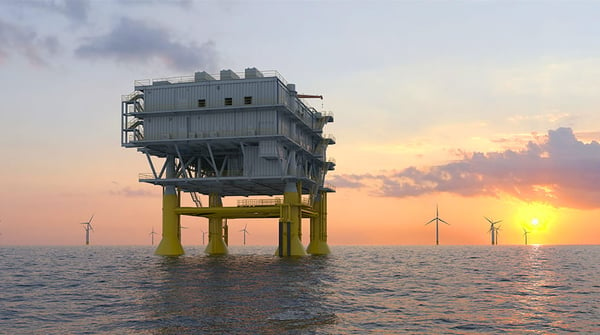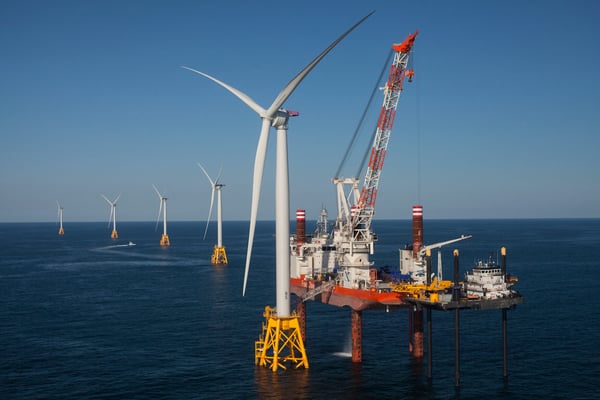Virtuosity Blog
OpenWindPower - Offshore Wind Industry's Reliable Solution
Bentley’s complete engineering solution portfolio for the offshore wind industry has been trusted by various world-leading engineering consultants, offshore EPC firms, certifying bodies, and project owners. OpenWindPower software, together with other Bentley solutions, have been the key to success for many offshore turbine wind projects in North America, Europe, and Asia.
China Three Gorges New Energy Dalian Zhuanghe III Offshore Wind Farm
Shanghai Investigation, Design & Research Institute Co., Ltd (SIDRI) employed MicroStation, Navigator, OpenBuildings Designer, OpenPlant, ProjectWise, ProSteel, and OpenWindPower in the design of China Three Gorges New Energy Dalian Zhuanghe III Offshore Wind Farm project. It was one of the largest offshore wind farms in China, which comprises 72 wind turbines with a combined capacity of 300 megawatts and a 220-kilovolt booster station situated in Bohai Sea. SACS and OpenWindPower enabled SIDRI to analyze the complex terrain, predict structural performance, and optimize foundation design.
"With OpenWindPower, the design team iterated designs to determine the best way to protect the tower foundations from ice damage. Their work resulted in anti-ice cones, which flare out where the tower meets the water. The design … protects the tower foundation by providing a much thicker surface area that deflects floating ice more effectively than a narrower surface."
 Image courtesy of SIDRI
Image courtesy of SIDRI
Block Island Wind Farm
At the other side of the globe, Keystone Engineering was contracted to design the substructures for five, 6-megawatt wind turbine generators as part of the USD 290 million Block Island Wind Farm project. Keystone relied on the OpenWindPower functionality to interface with Bladed software used by the turbine generator designer to optimize the design of the total structure and ensure safe operation. OpenWindPower enabled the team to design the composite construction and complex nodal geometry for the jacket substructures, delivering an alternative to typical offshore wind monopile concrete foundations that are limited to shallower water depths. The software’s interoperability ensured effective collaboration with the wind turbine designers, facilitating accurate modeling throughout the project.
As a result, Keystone was able to optimize the amount of steel needed for the sub-structure, reducing installation costs by over 20 percent compared to traditional monopile construction. The capability to perform, in parallel, multiple simulations, and numerous design iterations, helped the team shorten the design cycle by half.
“The Bentley SACS Wind Turbine module allowed us to streamline the analysis process reducing the design cycle time, the cost to the client, and the risk of errors in managing the tremendous amount of data needed to perform over 3,000 time-domain simulations.”
The effort put in by the Bentley SACS team to couple its post-processing capabilities with the hydrodynamic/aerodynamic modeling capabilities of other software systems has allowed for he first truly useful coupled analysis in the offshore wind industry. This has resulted in significant time and cost savings for the offshore wind foundation/sub-structure engineering community."
 Image courtesy of Keystone Engineering
Image courtesy of Keystone Engineering
Leting Windfarm
In another mega-offshore wind project in China, Bentley’s solution is the chosen structural software. The Leting windfarm project in Bohai Sea is planned for a total installation capacity of 4,400MW. For its first phase of 300MW, Guodian United Power Technology adopted OpenWindPower to design a six piled jacket type substructure for the 6MW wind turbine for both strength and fatigue conditions.
The scope of the analysis covered the full coupling effects between the aerodynamic mechanical and environmental loads. The preliminary design of the foundation and substructure was conducted using aerodynamic and mechanical loading predicted by DNV GL’s Bladed together with the environmental loading predicted by OpenWindPower.
For detailed design, the preliminary substructure and foundation model was used to conduct a fully coupled analysis in Bladed software based on the marine design and environmental conditions. The fully automated OpenWindPower-Bladed interface was then used to design the substructure and foundation for both fatigue and strength analysis. It greatly improved the efficiency of the design team and resulted in significant savings in manpower and material costs. Using OpenWindPower Fixed Foundation, Guodian calculated and analyzed 459 fatigue working conditions in only 30 hours.


